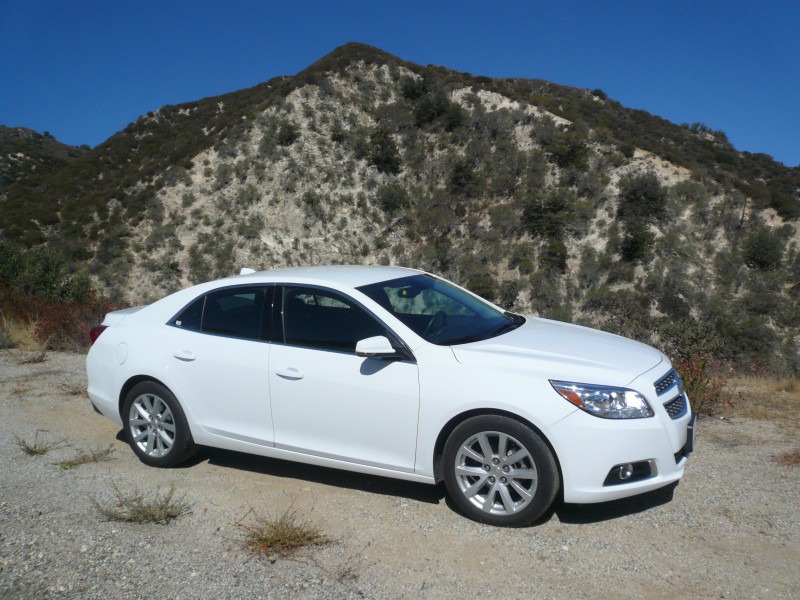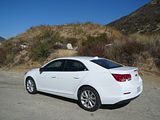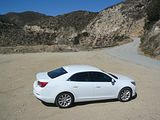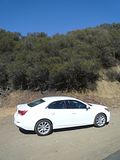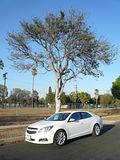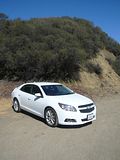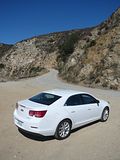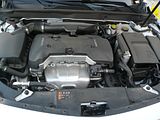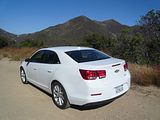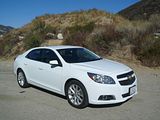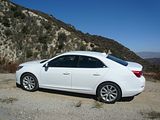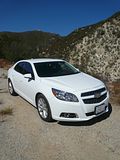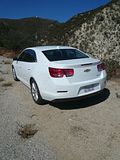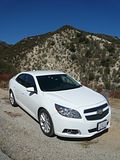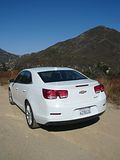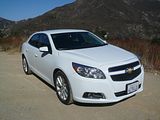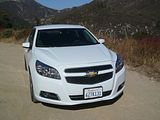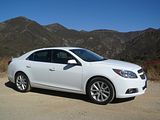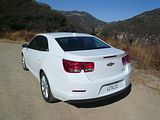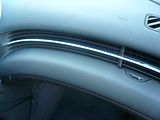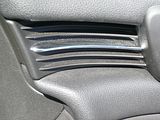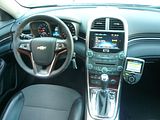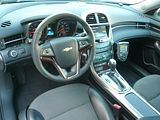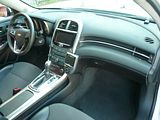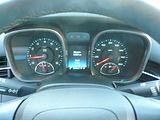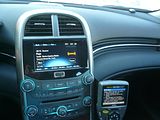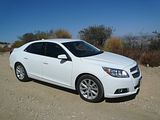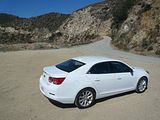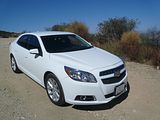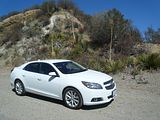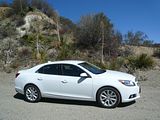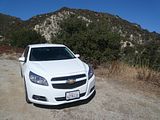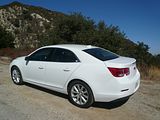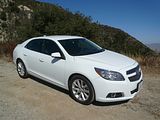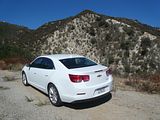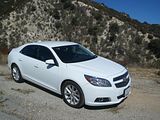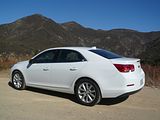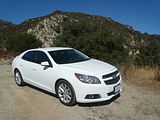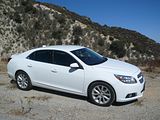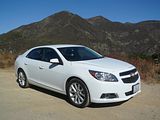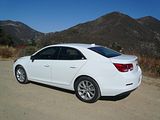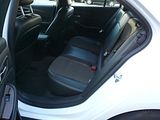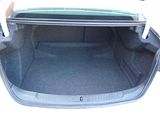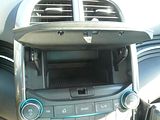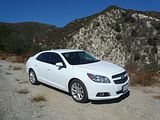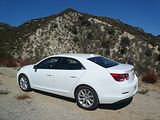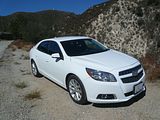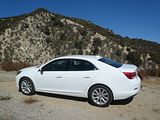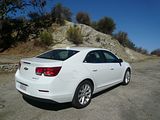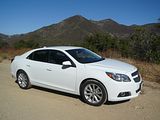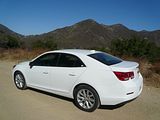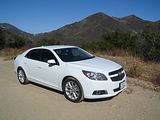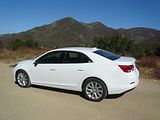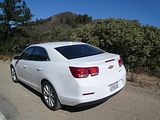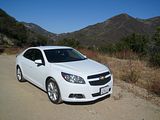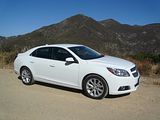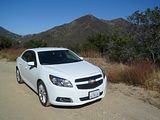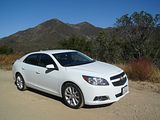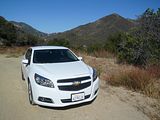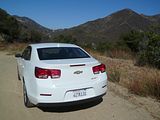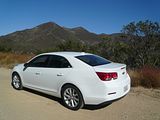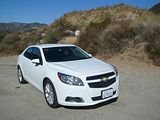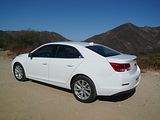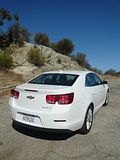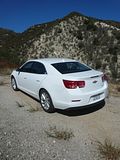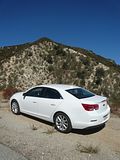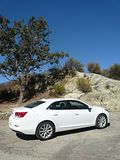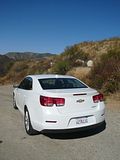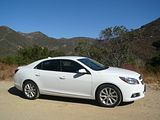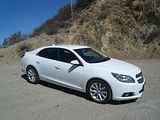
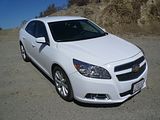
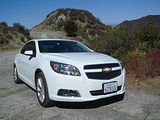

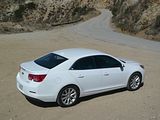
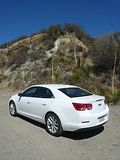
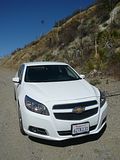
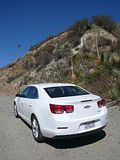
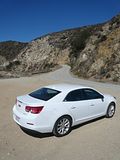
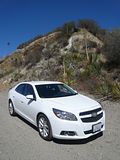
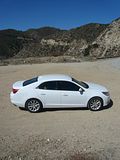
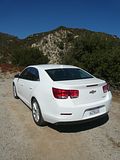
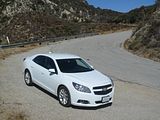

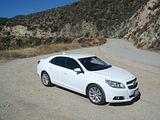
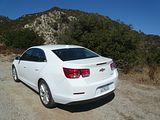


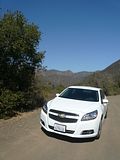
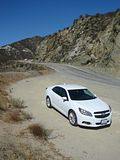
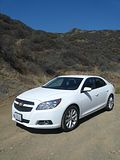

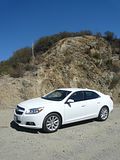
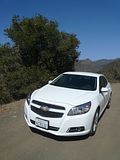
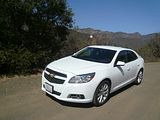

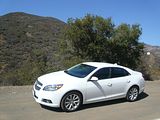
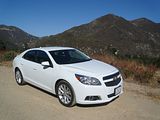
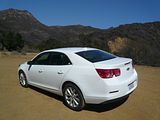

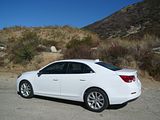
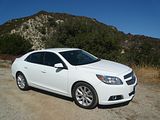
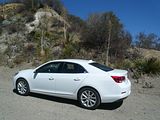
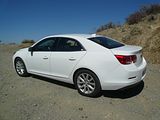
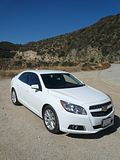
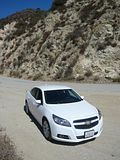
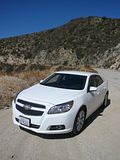
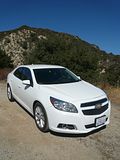
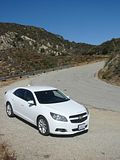
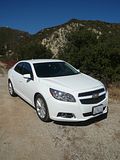
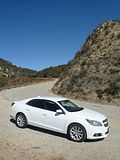
When this generation of Malibu was first released, all the early cars came with the 4 cylinder 2.4 litre Eco engine set up, which includes a mild-hybrid system that adds an electric motor for assistance during acceleration but which otherwise primarily powers an auto stop/start system as well as various vehicle accessories. The idea was that this would improve the overall fuel economy quite significantly, but in reality, as well as taking away some luggage space, it won few plaudits for the way the car drove and did not actually give the car noticeably better economy than non-hybrid rivals such as the Sonata and Camry. This was doubtless one of the reasons why the Malibu struggled to win over the early press reviewers. Whilst this unit is still available, standard on the LT and LTZ cars is a new 2.5 litre 4 cylinder powerplant which puts out a healthy 197 bhp, with a more potent 259 bhp turbocharged 2 litre unit available as an option. Coupled with a very smooth 6 speed automatic transmission, this 2.5 litre unit proved willing and very smooth, which made the Malibu a relaxing car to drive. It also proved to be impressively quiet, further adding to the feeling of serenity when cruising on the freeway. The Malibu needed 7.3 gallons to refill it having covered 181 miles, which computes to 24.8 mpg US or 29.63 mpg Imperial, not a bad figure for a car of this size, though nowhere near what I achieved with the rival Nissan Altima earlier in the year.
Chevrolet do not intend anyone to conceive the Malibu as a sports sedan, so it is no surprise that the driving dynamics are focused more on comfort for cruising than a particularly exciting steer. Even so, whilst not up to Ford standards of precision and feel, the steering in the Malibu was not bad, being quite well judged with apposite weighting, and the handling gave no cause for concern. The ride seemed good, though the smooth roads of Arizona where I tested the car are not as stern a challenge as in the neighbouring State to the West. The brakes seemed to do their job well, with good weighting and feel to the pedal. There is an electronic parking brake, located on the right of the centre console. Visibility when reversing is a challenge, as the angle of the rear window means that all you can really see is the sky, giving you no clue where the back of the car is. The door mirrors are not particularly generously sized, so were not an awful lot of help, either.
A few days before driving this Chevy, I had a Buick LaCrosse, and one glance at the dashboard of this Malibu revealed a family resemblance that goes beyond the use of the turquoise ambient lighting highlights around some of the dials. With quite a large central part of the dashboard clearly dividing the cockpit into two, very much like the Buick, this does look and feel somewhat more upscale than the previous generation of the model. There is much of the switchgear and appearance that is common here with the more costly Buick, though the details are, of course, different, and the Chevy has the rather odd design feature of a false air vent grille that goes from the genuine passenger air vent all the way to the central part of the dashboard.
In the 2LT trim version of the test car, it is also blessed with rather a lot of highly polished “wood”, on the steering wheel, the doors and the centre console around the gearlever. As wood finishes go, this one, which was a sort of dark mahogany finish is not as bad as some, but whether it adds to the luxury ambience generated by the leather on the steering wheel and part covering the seats will be a matter of personal taste, and the rather nasty plastic on the hub of the steering wheel does rather let the side down. The most striking difference in the instrumentation is that the two main instruments of speedometer and rev counter are each contained in an oblong shaped recess, in a style reminiscent of the Camaro. Smaller fuel level and water temperature gauges are inset in the lower part of the larger dials. Between them is a digital display area for trip computer functions and this operates exactly as in the Buick, with a combination of a button on the left hand column stalk and a twist action sleeve on that stalk to cycle through the various detailed pieces of information. The column stalks operate the indicators and, from the right hand side, the wipers. Lights are controlled by a rotary dial to the left of the wheel on the dash. The centre of the dash is dominated by a 7″ display screen for the various Infotainment functions. It is called MyLink in the Malibu, and as well as having nice clear graphics, it is touch sensitive. As well as operating the radio, it there are a number of vehicle settings that are made through this interface. There are a whole load of buttons for the audio set up under the screen as well, and so you need to use a combination of these and the screen to do things like change audio waveband. Chevrolet had resisted the temptation to include the heating and ventilation functions into the MyLink screen, so beneath the audio controls are the 3 rotary dials and a whole array of buttons for the climate control system. Repeaters for some audio unit functions and the cruise control setting as on the steering wheel hub. Although overall there are quite a lot of buttons, the Malibu proved to be one of those cars where it was quite to get in, take a quick glance and just drive it without being unduly baffled in how to operate anything.
With 8 way electric adjustment for the driver’s seat, including 4 -way lumbar support and a steering column that as well as moving up and down would also go in and out, it was easy to get the perfect driving position. The seats in the test car had a part leatherette covering to the sides of both the squab and the backrest, which not only looked good, but added a touch of the feeling of luxury that you will not find in mid spec versions of its competitors. I found the seat itself very comfortable.
The biggest single item of criticism received by this Malibu is that thanks to the slightly shorter wheelbase of this model compared to its predecessor, there is not enough space in the back. Sadly, this proved to be true. If the front seat occupants are my size, with short legs and so the front seats are set well forward, there will not be a problem, but if they are longer legged, then there very well could be. When I got the car, the passenger seat was set well back, and I tried to squeeze in the rear seats, and could only just get in and was not terribly comfortable. I then realised that the seat was not set back as far as it would go, and when I tried this, then rear legroom became next to non-existent. Headroom is far less of a problem, and would be unlikely to trouble those in the back, and thanks to the fact that this Malibu is wider than its predecessor, there is ample width for three to fit across the seat area, though the middle passenger does have a moderate intrusion from the transmission tunnel to contend with as well;. The large drop down central armrest contains a pair of cup holders and an oddments cubby on its obverse. Compared to its rivals, this car is indeed less generous for its rear seat occupants than any other. Initially I cursed the fact that there appeared to be no external release for the boot, but in fact there is a small button alongside the central brake light, so it is not necessary to use the key fob or a button from inside the cabin to gain access. Once in, the boot is of a good size, extending well back from the rear of the car. Additional underfloor space for odds and ends is available around the spacesaver tyre. More space can be created by dropping the asymmetrically split rear seat backrests onto the seat cushions, giving a long loading platform, which is flat. Inside the cabin, the glovebox is not quite as big as the wide opening would have you believe, but it is still a reasonable size, and there are bins on all doors. There is a neat little cubby available behind the Infotainment screen, accessible by pressing a button, which lifts the whole screen up, and there is a smaller lidded area above the driver’s left knee, as well as a cubby under the central armrest. There are also some little recesses in the sides of the centre console, though these are quite awkward to access when sitting in the seat, strapped in. Rear seat passengers get map pockets in the front seat backs, as well as door bins and the cubby under the central armrest.
The 2013 Chevrolet Malibu midsize sedan is currently available in four main trims: LS, LT, LTZ and Eco. Standard equipment on the LS includes 16″ alloy wheels, automatic headlights, keyless entry, full power accessories, cruise control, air-conditioning, a tilt-and-telescoping steering wheel, a 60/40-split-folding rear seat, OnStar, Bluetooth phone connectivity, a touchscreen infotainment interface and a six-speaker sound system with a CD player and satellite radio. The LT actually consists of three subsets: 1LT, 2LT and 3LT. Added perks of the 1LT over the LS include heated mirrors, upgraded upholstery, Chevrolet MyLink smartphone integration (including voice controls, Pandora and Stitcher Internet radio compatibility) and an upgraded audio system with a touchscreen infotainment interface, an auxiliary audio jack and an iPod/USB audio interface. The 2LT, which was the spec of the test car, and would appear to be the one most often found in the rental fleets further adds 18″ alloy wheels, fog lamps, remote vehicle start, a spacesaver spare tyre (versus just a tyre repair kit), dual-zone automatic climate control, an eight-way power driver seat (with power lumbar) and a leather-wrapped steering wheel. The 3LT is essentially identical to the 2LT, but comes with the 2 litre turbocharged engine. Upgrading to the top-of-the-line LTZ provides leather seating, heated front seats, an eight-way power passenger seat (with power lumbar) and an auto-dimming rearview mirror. Like the 3LT, the 2LTZ subset trim level is the same as the LTZ but with the turbocharged engine.
As I had no-one aboard to bemoan the lack of rear seat space, I actually found little to complain about following my time with the Malibu. It goes well, is very refined and quiet at speed, was decently economical, and whilst not exciting to drive, nor does it demonstrate any significant weak points. It is quite nicely finished and decently well equipped. But it does have a problem, or rather half a dozen problems, and they are spelled Fusion, 6, Accord, Altima, Optima, Sonata and Passat. OK, that’s actually 7, but the point is that these cars, Malibu’s US market rivals, are also extremely competent, and I could think of a good reason why I would select any of them in preference to the Chevy. Being “better” than the Camry – which will sell strongly based on reputation alone – is not sufficient, and I fear that an emergency refresh, whilst attempting to address some of the criticism received a year ago, is not really going to solve the basic problem. Only a complete redesign can do that, and I would guess that this is some years away. So, if the rental car offer is a 2013 Malibu, fear not, as it is a solid and worthy family sized car. But if there is a choice, you would probably enjoy one of its rivals that little bit more, and if you have rear seat passengers they would be extremely grateful if you please would take something else.

